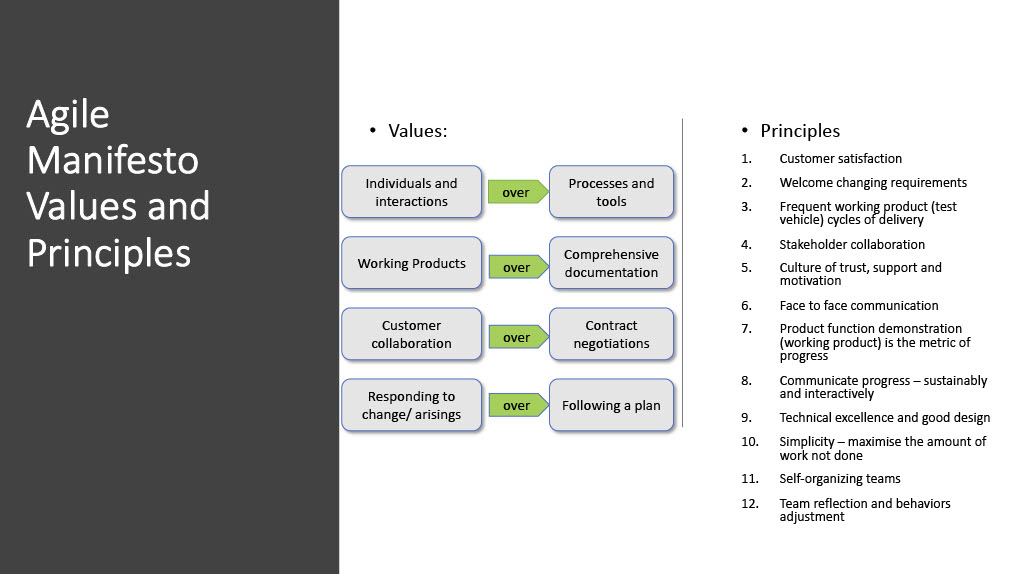Blog
“I feel the need, the need for speed” - Agile Development and the Lockheed “Skunk Works®”
The key to success in developing a new product and delivering
it to market is “ Speed of Learning“. How the information
needed to demonstrate that the product does what it’s supposed
to do is acquired (by test or analysis) as quickly and
efficiently as possible in order to support verification and
validation, decision making and progress toward an in-service
product. These days a lot is made of "agile development"
principles that has been espoused mainly by the software
industry in recent years. It is however universally applicable
to any complex product development programme. To me, agile is
a digital era re-branding of how things used to get done in a
pre-digital age where iterative physical testing with limited
computing capability was the only way to get a complex product
or system ready for customer delivery.
The dictionary defines the word “agility“ as:
- The power of moving quickly and easily; nimbleness.
- The ability to think and draw conclusions quickly; intellectual acuity.
Agile development is all about setting up your organisation to
achieve both these things. Ultimately it’s about ensuring you
can do things quickly, be able to change direction when
required and reach required decision points in a logical order
and move on. The values and principles of the “agile development manifesto” are given below. All are needed in order to run effective
and timely development programmes:

The "Agile Manifesto" values and principles

Ben R. Rich “The Father of Stealth” and the F-117 Nighthawk fighter
In my opinion, the best demonstration of agility was the
operation of the
Lockheed
Skunk Works® originally run by one of my heroes, Kelly Johnson
(see last blog). The philosophy that dictated how the Skunk
Works® was run was KISS - Keep It Simple, Stupid! That along
with following mantras like "fail fast, learn quick” produced
some incredible results in unbelievably short lead-times. The,
U2
and
SR-71
reconnaissance planes and the
F-117
stealth fighter were some of the products developed through
the Kelly Johnson instituted 14 “rules” for running the Skunk
Works® which are reproduced below with the key points in bold.
Remember this is for an organisation producing aircraft for
military application - I trust you will interpret them in the
context of your own industry/ market.
- The Skunk Works® manager must be delegated practically complete control of his program in all aspects. He should report to a division president or higher.
- Strong but small project offices must be provided both by the military (customer) and industry.
- The number of people having any connection with the project must be restricted in an almost vicious manner. Use a small number of good people (10% to 25% compared to the so-called normal systems).
- A very simple drawing (design) and drawing release system with great flexibility for making changes must be provided.
- There must be a minimum number of reports required, but important work must be recorded thoroughly.
- There must be a monthly cost review covering not only what has been spent and committed but also projected costs to the conclusion of the program.
- The contractor must be delegated and must assume more than normal responsibility to get good vendor bids for subcontract on the project.
- The inspection system as currently used by the Skunk Works, which has been approved by both the Air Force and Navy, meets the intent of existing military (customer) requirements and should be used on new projects. Push more basic inspection responsibility back to subcontractors and vendors. Don't duplicate so much inspection.
- The contractor must be delegated the authority to test his final product in flight. He can and must test it in the initial stages. If he doesn't, he rapidly loses his competency to design other vehicles.
- The specifications applying to the (development) hardware must be agreed to well in advance of contracting. The Skunk Works practice of having a specification section stating clearly which important military specification items will not knowingly be complied with and reasons therefore is highly recommended.
- Funding a program must be timely so that the contractor doesn't have to keep running to the bank to support government projects.
- There must be mutual trust between the military (customer) project organization and the contractor with very close cooperation and liaison on a day-to-day basis. This cuts down misunderstanding and correspondence to an absolute minimum.
- Access by outsiders to the project and its personnel must be strictly controlled by appropriate security measures.
- Because only a few people will be used in engineering and most other areas, ways must be provided to reward good performance by pay not based on the number of personnel supervised.
There are clear similarities between the two. Whilst many
organisations get the agile development approach right, there
are three key damaging traits that can creep in that can
compromise the approach. The first is highly detailed,
inflexible planning in far too fine a level of fidelity.
Whilst good planning is essential, it needs to be focussed on
achieving the cardinal decision points not every minute step
along the way.
Colin Powell is quoted as saying; “There are no secrets to
success. It is the result of preparation, hard work and
learning from failure”. He, amongst others also re-quotes a
saying; “No plan survives first contact with the enemy”. This
simply acknowledges that you cannot fully plan for a fluid
situation. In the case of development of a complex product or
system, we do not know what issues will arise, only that some
inevitably will. In this case the plan has to address the key
programme intentions (e.g. demonstrate cardinal functionality
traits) in the right order. Good risk assessments of the
design and the programme help develop a view of the most
likely and most damaging issues that may be encountered and
thus "plan b and c" flexibility built in as acceptable
directions of travel. These become the issues that the plan
needs to address in this manner. The only certainty is that
the original plan will not be executed in the detailed way it
was intended. In the face of unpredictability, we need
adaptability. To be less subtle about it, sh*t will happen and
the organisation needs to be able to deal with it!
The second trait is processes that are too detailed and
constraining. That is, the work processes are so rigid,
progress is hampered by dotting every i and crossing every t
in a very prescribed manner. Steve Jobs once said, “We don’t
hire smart people to tell them what to do; we hire smart
people so they can tell us what to do”. Add that to a third
trait, over zealous governance, and the whole approach breaks
down as several of the key principles of “Agile" get destroyed
as a result. Self-organising teams no longer feel self
organised, the culture of trust, support and motivation is
undermined and adjustment following reflection is constrained.
The "practically complete control” of the leader is also
compromised.
The impact of breaking the people principles are most damaging
to team cohesion and thus delivery. Progress gets bogged down
with details that aren’t essential, programme reviews get into
far too much detail, the way the work gets done is inflexible
and in the worst cases “tick box" exercises and frustration
rapidly sets in. More resource then get thrown at the project
in an attempt to keep up with milestones and focus gets lost
as the size of the task becomes unwieldy.
In my opinion, the ultimate manifestation of the Skunk Works
approach was in establishing the critical functionality of the
F-117 Nighthawk stealth fighter (i.e that it was invisible to
radar) as quickly as possible. This was just into Ben R Rich’s
tenure in charge (he had taken over from Kelly Johnson having
been mentored by him). In the book "Skunk Works: A Personal
Memoir of My Years at Lockheed”* there is a great description
of how, having computer modelled radar profiles for aircraft
shapes that they went on to build scale wooden models that
were used in an electromagnetic chamber and then mounted on a
pole in the desert to validate the modelling and verify that
the profile was to all intents and purposes invisible to
radar. Having established the shape, everything about the
aircraft requirements and its design had to be flexible to
cope with restrictions placed to ensure that “invisibility”
was never compromised. For a revolutionary aircraft, the time
from letting the contract in 1977 to customer acceptance and
entry into service in 1982 was stunningly fast. What was more
amazing was that the existence of the aircraft was not
publicly acknowledged until 1988 after it had been deployed in
several combat campaigns! To me there is no doubt that the
Skunk Works didn’t fall into any of the traps mentioned above
in executing the F-117 programme.

Model Lockheed F-117 Nighthawk fighter wooden model on radar profile testing in the desert.
How does your business match up to the Agile Development
principles and/or rules on the “Skunk Works”? Are you taking
the right approach to your product development programme
execution and making the best of your smart employees? Do you
need any help in setting up a complex development programme or
establishing capability to let you execute? Feel free to get
in touch to discuss any requirements you may have. Thank you
for reading this blog, I hope you enjoyed it. The next blog
will be “It’s all about the data” - why test is a means to an
end.
* "Skunk Works: A Personal Memoir of My Years at Lockheed” by
Ben R. Rich and Leo Janus is another recommended and
inspirational read (available here
or elsewhere) whether you are generally interested in aircraft
or how to get things done in the most complex of cases.
